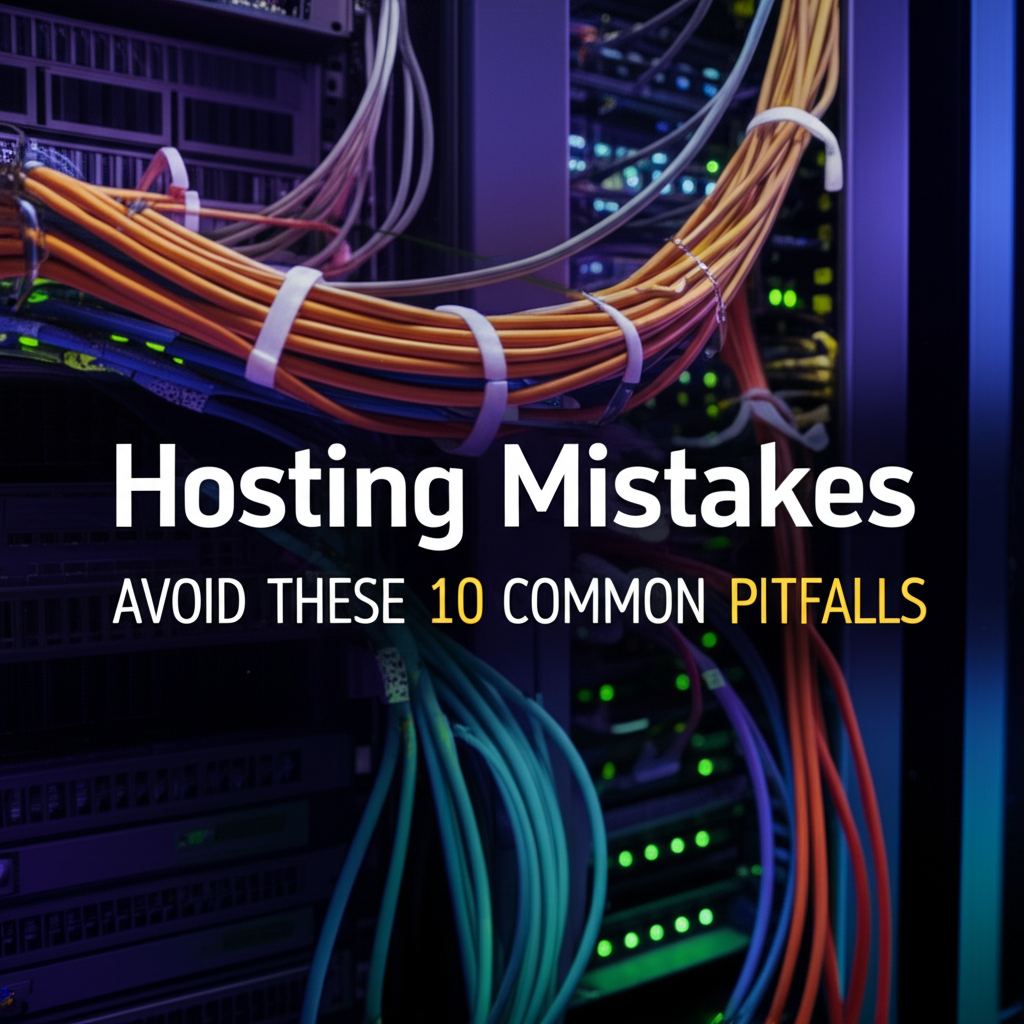- Understanding Common Hosting Mistakes
- 1. Choosing the Wrong Hosting Plan
- 2. Neglecting Website Security
- 3. Ignoring Website Backups
- 4. Overlooking Website Performance Optimization
- 5. Not Monitoring Website Uptime and Downtime
- 6. Skipping Website Scalability Planning
- 7. Not Utilizing a Content Delivery Network (CDN)
- 8. Failing to Implement Caching Mechanisms
- 9. Poor Communication with Your Hosting Provider
- 10. Not Reading the Terms of Service
- Avoiding Hosting Mistakes Ensures Online Success
Hosting Mistakes: Avoid These 10 Common Pitfalls
Hosting mistakes can cripple your website’s performance, damage your search engine rankings, and ultimately drive visitors away. Choosing the right hosting provider and configuring your setup correctly is crucial for online success. From picking the wrong plan to neglecting security measures, numerous potential pitfalls await the unwary website owner. This article outlines ten common hosting mistakes and provides actionable advice to help you avoid them.
Understanding Common Hosting Mistakes

Choosing a web host is a critical decision for any website owner. Making the right choice can mean the difference between a smooth, successful online presence and a frustrating, underperforming website. Let’s explore some of the most frequent errors people make when setting up their hosting.
1. Choosing the Wrong Hosting Plan
One of the most prevalent hosting mistakes is opting for the wrong hosting plan. Shared hosting, while budget-friendly, may not be suitable for websites experiencing high traffic volumes. Conversely, investing in a dedicated server when a VPS would suffice can be an unnecessary expense. Carefully analyze your website’s needs, considering factors like traffic, storage requirements, and resource usage, to select the most appropriate plan.
2. Neglecting Website Security
Failing to prioritize website security is a grave hosting mistake. Regular backups, strong passwords, and up-to-date software are crucial for protecting your website from malicious attacks. Consider implementing additional security measures, such as two-factor authentication and web application firewalls, to further fortify your defenses against potential threats.
3. Ignoring Website Backups
Regular website backups are your safety net against data loss due to technical glitches, hacking attempts, or accidental deletions. Neglecting this crucial step can lead to irreversible damage and significant downtime. Establish a robust backup strategy, ensuring your data is backed up frequently and stored securely in a separate location.
4. Overlooking Website Performance Optimization
Optimizing website performance is essential for providing a positive user experience. Slow loading times can frustrate visitors and negatively impact your search engine rankings. Minimize HTTP requests, optimize images, leverage browser caching, and consider using a Content Delivery Network (CDN) to enhance your website’s speed and performance.
5. Not Monitoring Website Uptime and Downtime
Consistent uptime is crucial for maintaining a reliable online presence. Ignoring website monitoring can lead to extended periods of downtime, potentially costing you valuable traffic and revenue. Utilize website monitoring tools to receive alerts about downtime incidents, enabling you to address issues promptly and minimize disruptions.
6. Skipping Website Scalability Planning
As your website grows, its resource requirements will inevitably increase. Failing to plan for scalability can result in performance bottlenecks and downtime as your traffic expands. Choose a hosting provider that offers scalable solutions, allowing you to seamlessly upgrade your resources to accommodate future growth.
7. Not Utilizing a Content Delivery Network (CDN)
A CDN can significantly improve website performance, especially for users located geographically far from your server. By caching your website’s content on servers distributed globally, a CDN reduces latency and ensures faster loading times for visitors worldwide. Consider incorporating a CDN into your hosting setup to enhance the user experience for your global audience.
8. Failing to Implement Caching Mechanisms
Implementing caching mechanisms, both on the server-side and client-side, can drastically reduce server load and improve page load times. Caching stores frequently accessed data, allowing it to be served quickly without repeatedly querying the database. Leveraging caching is a crucial step in optimizing website performance.
9. Poor Communication with Your Hosting Provider
Maintaining open communication with your hosting provider is essential for addressing technical issues and receiving support when needed. Establish a clear line of communication and familiarize yourself with their support channels. Prompt and effective communication can help resolve problems quickly and minimize downtime.
10. Not Reading the Terms of Service
Before signing up with a hosting provider, thoroughly review their terms of service. Understanding the terms and conditions, including acceptable use policies, resource limitations, and account termination clauses, is essential for avoiding potential conflicts and ensuring a smooth hosting experience.
Avoiding Hosting Mistakes Ensures Online Success
By understanding and avoiding these common hosting mistakes, you can lay a solid foundation for your website’s success. Choosing the right hosting plan, prioritizing security, optimizing performance, and maintaining open communication with your provider are essential steps towards creating a reliable, secure, and high-performing online presence. Taking the time to address these crucial aspects of hosting can significantly contribute to achieving your online goals.











Leave a Reply